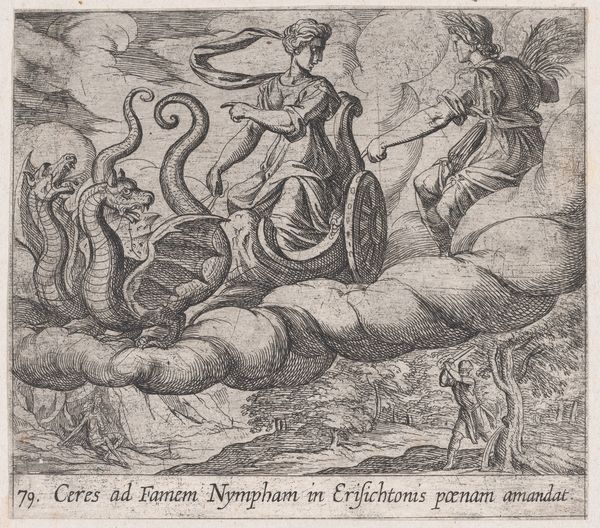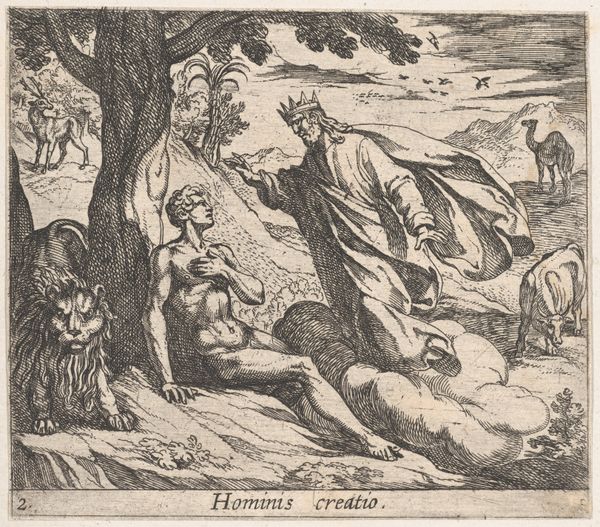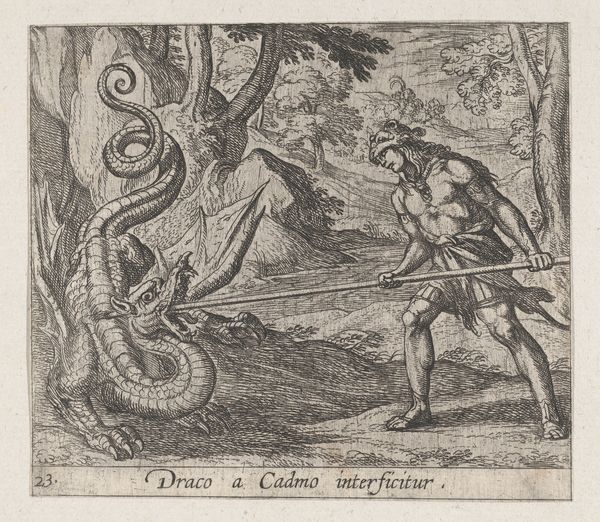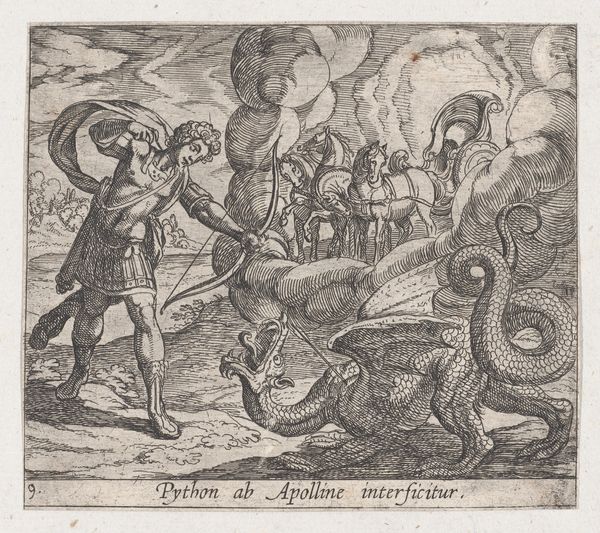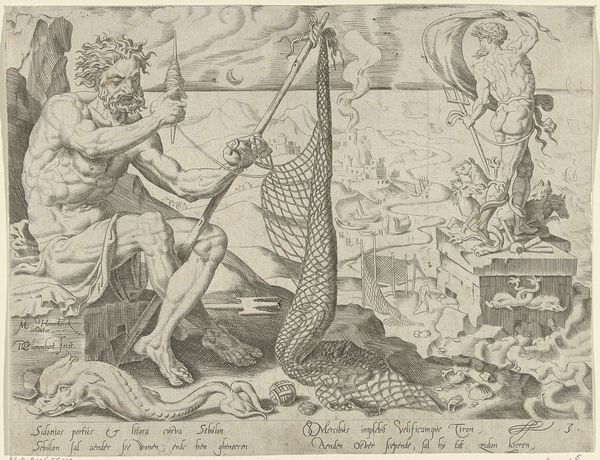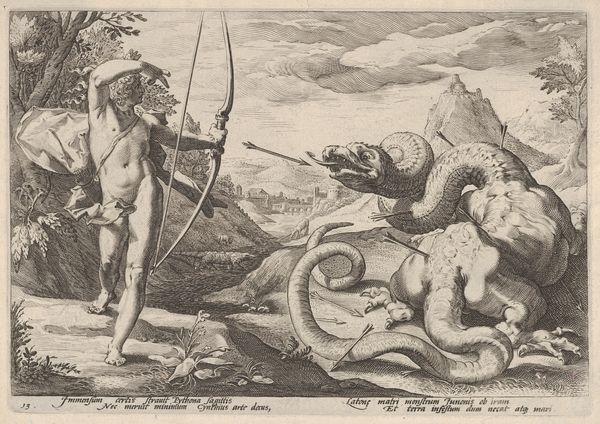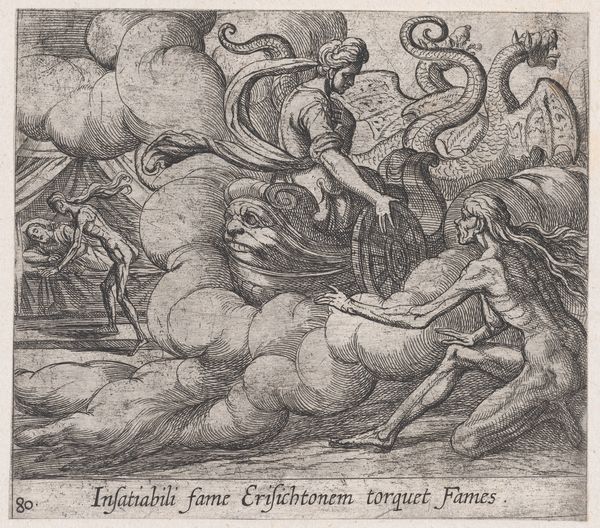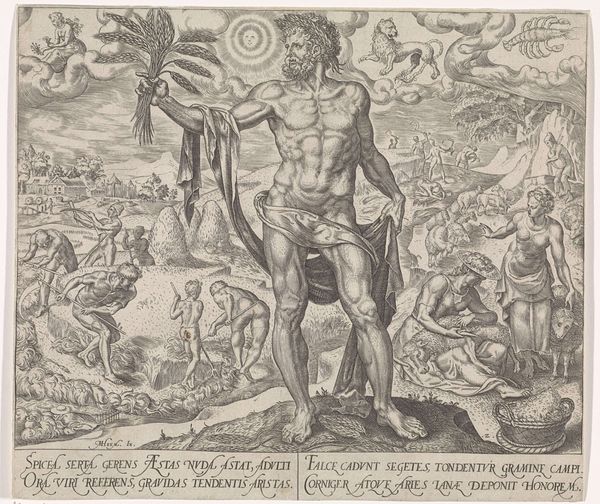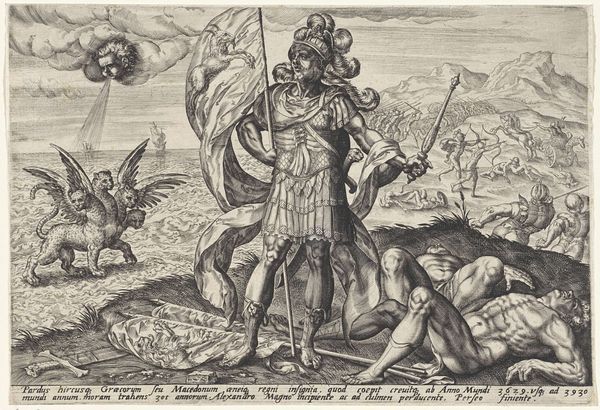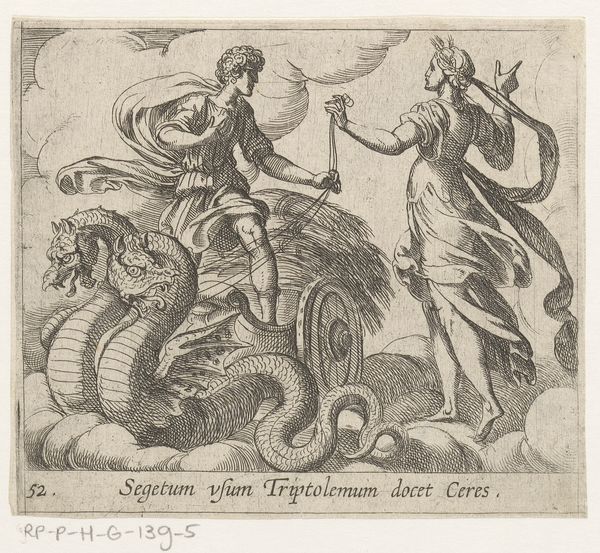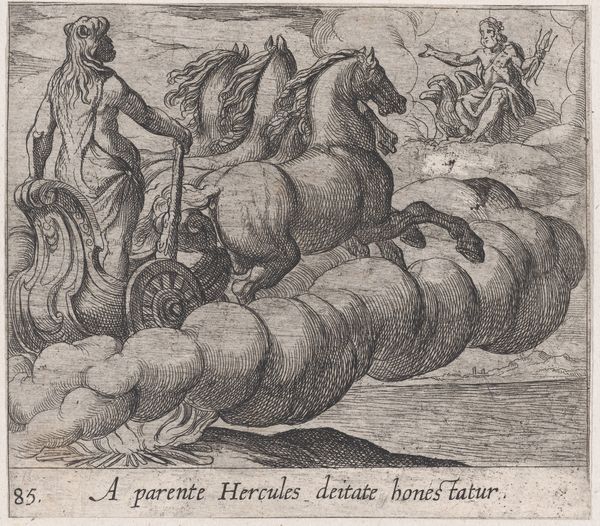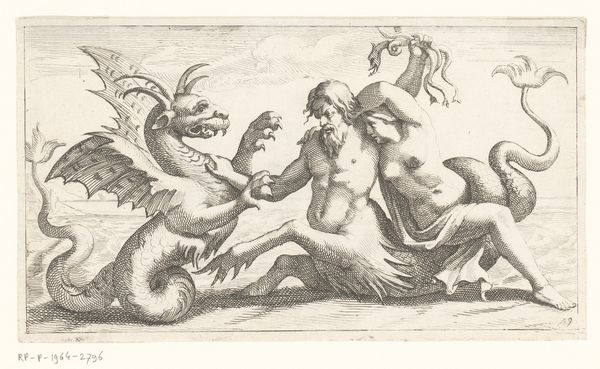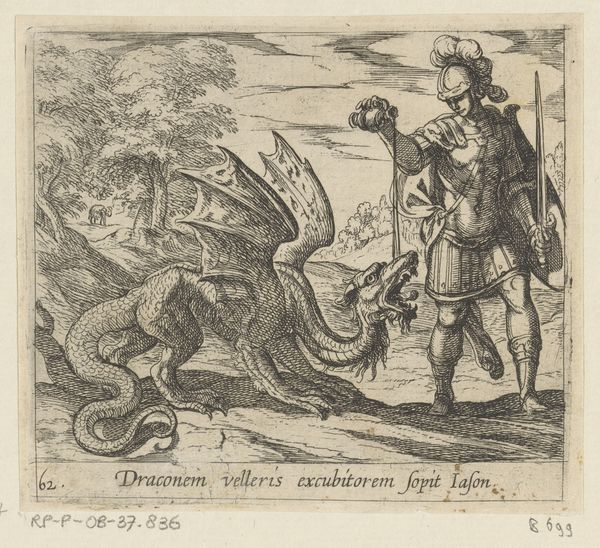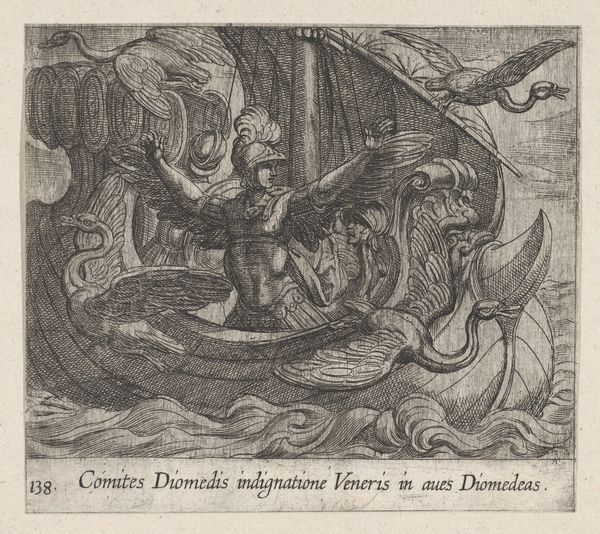
Plate 68: Hercules and Cerberus (Cerberum domat Hercules), from Ovid's 'Metamorphoses' 1606
0:00
0:00
drawing, print, engraving
#
drawing
# print
#
figuration
#
line
#
history-painting
#
italian-renaissance
#
engraving
Dimensions: Sheet: 39 3/4 × 4 1/2 in. (101 × 11.5 cm)
Copyright: Public Domain
Curator: This is Antonio Tempesta's "Plate 68: Hercules and Cerberus (Cerberum domat Hercules), from Ovid's 'Metamorphoses'," created in 1606. It's an engraving currently housed at the Metropolitan Museum of Art. Editor: What strikes me immediately is the intricate linework, the density of it. It creates this dramatic tension; you can almost feel the coarse fur of Cerberus and Hercules' brute strength. Curator: Indeed, the Italian Renaissance engraving tradition allowed for widespread dissemination of classical narratives like this. We need to consider who the audience was for such prints. Think of the print shops that traded such images and the hands through which they passed. The very act of making and distributing the artwork makes this artwork compelling. Editor: Precisely. Consider also the socio-political context: powerful families using classical imagery to reinforce their authority. Hercules, the ultimate symbol of strength subduing the beast; what could be a more potent visual metaphor? The museum's role then becomes one of conservation, interpretation, even democratization of this potent, yet potentially problematic iconography. Curator: Looking closer, consider Tempesta’s technical skill. He utilized line to render texture, volume, and even light. The tools available to him, the copper plate, the burin; these defined his artistic capabilities. Think of the workshops where such skills were painstakingly honed. The production involved labor, craftsmanship, and the transfer of tacit knowledge. Editor: And these prints become crucial vehicles for transmitting knowledge. How many learned about these myths for the first time via such readily accessible visual forms? The scale of production impacts visibility, therefore impacting knowledge consumption throughout history. Curator: Right, the "Metamorphoses," Ovid’s poem itself, only reached a broader audience through printed and illustrated versions. It is a good demonstration of the interplay between craft and knowledge diffusion, shaping public perception. Editor: Seeing it displayed within the Met reminds us of the evolving cultural values assigned to art, as we continue to find meaning and relevance in ancient tales adapted for the modern museum setting. Curator: Absolutely. By examining both its creation and social context, we can gain deeper understanding of the cultural work this seemingly simple engraving performed, and continues to perform, centuries later.
Comments
No comments
Be the first to comment and join the conversation on the ultimate creative platform.
